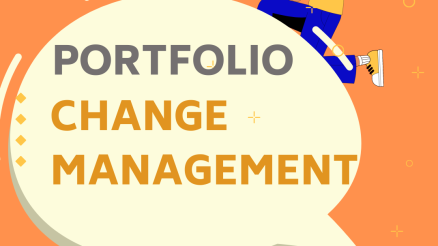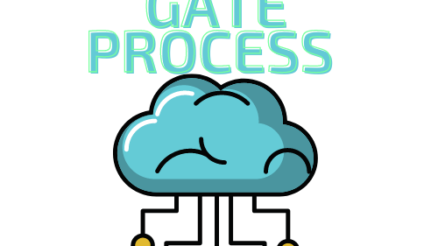In an organization that’s changing, there are usually five pillars of sustainable change that guide the transition and keep it on track towards sustainable change management.
The 5 pillars of sustainable change are: leadership commitment, clear vision and strategy, employee engagement, process improvement, and data-driven decision-making.
Each pillar is essential to achieving lasting change in an organization.
Let’s dig deeper into 5 pillars of organizational change.
What is sustainable organizational change?
Sustainable organizational change is the ability of an organization to continuously adapt and improve its processes in order to make lasting change and have a competitive edge in business market. Sustainable change involves not only implementing proposed change but to sustain for long period of time.
What are the 5 pillars of sustainable organizational change
Following are 5 pillars of sustainable organizational change:
1. Leadership commitment
A company or organization cannot go through a successful change without the full support of its leaders. The role of leadership is crucial in change management. Leaders need to be committed to the change in order for it to be successful. This means that they need to be willing to make whatever changes are necessary to ensure that the change is successful. They also need to be able to communicate this commitment to the rest of the organization. If leaders are not fully committed to the change, it is very unlikely that it will be successful.
2. Clear vision and strategy
Many people confuse change with chaos. Change does not have to be synonymous with anarchy; in fact, lasting change requires a clear vision and strategy. Without a plan, individuals and groups can quickly become distracted and lost, leading to frustration and a feeling of powerlessness. A clear and powerful vision provides a sense of direction and purpose, while a well-crafted strategy ensures that everyone is working towards the same goal. It gives individuals and groups a sense of ownership and control, empowering them to effect real change.
3. Employee engagement
Employee engagement is critical for sustainable organizational change. Employees who are engaged feel a sense of ownership and responsibility for their work and the organization as a whole. When people feel like their voices are heard, they are more likely to be motivated and show less resistance towards change. They are more likely to be creative and come up with new ideas, and they are more likely to stick with an organization during times of change. Furthermore, engaged employees tend to be more productive and have lower rates of absenteeism. By engaging employees in the change process, organizations can increase the chances of success and ensure that the changes they make are sustainable in the long term.
4. Process improvement
Process improvement is a sustainable way to bring about organizational change. It helps organizations to identify areas where they can be more efficient and to make changes that will improve the quality of their products or services. Process improvement can be achieved through a variety of methods, such as process mapping, process audits, and process redesign. In order to be successful, organizations need to have a clear understanding of their current processes and the goals they hope to achieve through improvement. They also need to involve all stakeholders in the process and make sure that everyone is aware of the changes that are being made. By taking these steps, organizations can ensure that their process improvement efforts lead to sustainable organizational change.
5. Data-driven decision-making
Leaders who want to bring about sustainable organizational change must make data-driven decisions. Otherwise, they run the risk of making changes that are not based on facts and that could do more harm than good. Data-driven decision-making is critical for successful and sustainable change management because it allows leaders to take timely corrective measures and improve processes. By relying on data, leaders can avoid making rash decisions that could lead to further chaos within the organization. When data is used to inform decision-making, it gives leaders the ability to make sound decisions that are based on evidence and that are more likely to result in sustainable change.
Key challenges associated with implementing these pillars
Implementing sustainable organizational change can be a challenge for any company. Here are five of the most common challenges associated with sustainable change:
1. Sustaining Momentum
Once an organization starts down the path of sustainable change, it can be difficult to keep the momentum going. There need to be clear goals in place, and everyone needs to be bought into the change in order for it to be successful. Additionally, sustainable change requires ongoing effort; it’s not something that can be achieved overnight and then forgotten about.
2. Resistance to Change
Change is often met with resistance, both from within an organization and from external stakeholders. Overcoming this resistance can be difficult, but it’s essential for sustainable change to occur. Internal resistance can be overcome by ensuring that everyone is bought into the change and by communicating the benefits of the change to those who may be resistant. External resistance may require more convincing, such as showing how the proposed changes will positively impact the community or environment.
3. Costs
Sustainable change often requires investment, both in terms of money and time. Organizations need to be prepared to make this investment if they want to successfully implement sustainable change.
4. Complexity
Many sustainable changes are complex, which can make implementation challenging. Organizations need to take a holistic approach to sustainable change, considering all aspects of their business and operations. They also need to have a clear understanding of the changes they’re trying to make and how those changes will fit into their overall business strategy.
5. Reporting
Organizations need to track their progress when implementing sustainable change so that they can measure their success and identify areas for improvement. This can require designing new reporting mechanisms or modifying existing ones. It’s important to ensure that data is collected accurately and consistently so that results are meaningful and actionable.
How can you get started on making your business more sustainable using these 5 pillars
There are several ways you can get started on making your business more sustainable using these 5 pillars. Here are a few suggestions:
1. Evaluate your business processes and identify areas where improvement is needed.
2. Communicate the goals of your sustainability initiative to all stakeholders and get their buy-in.
3. Make data-driven decisions to guide your change efforts.
4. Invest in resources that will help you implement sustainable change.
5. Track your progress and evaluate your success.
Final Words
Change is difficult but implementing a sustainable change management strategy can help your business see results in the long term. The 05 pillars of change management include leadership commitment, clear vision and strategy, employee engagement, process improvement, data-driven decision making . However, these changes will not come easy and you may face some challenges when trying to implement them. Do you have what it takes to commit to these 05 pillars of sustainable change management?



